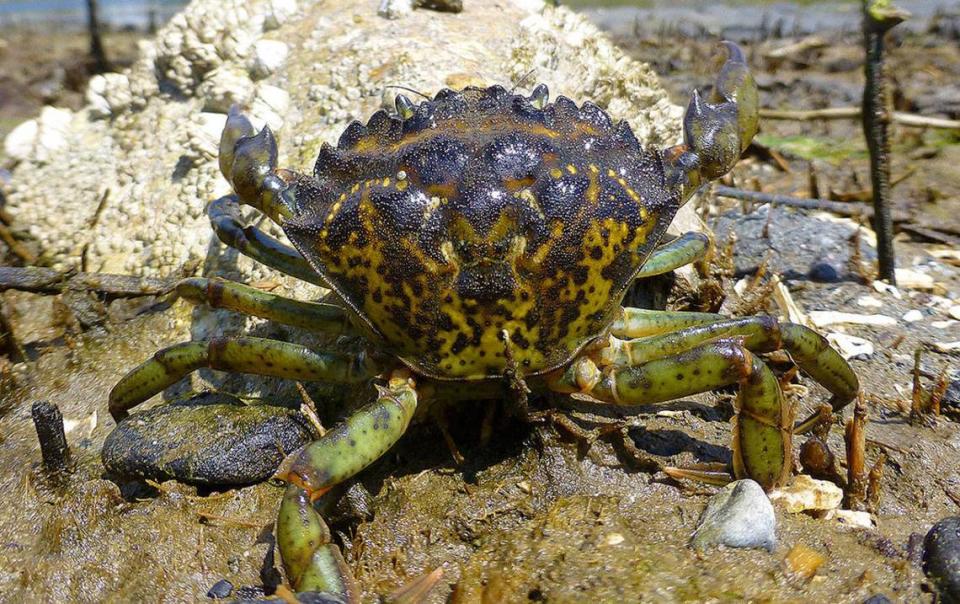Lummi Nation declares disaster as tens of thousands of invasive European green crab found
The Lummi Indian Business Council has passed a resolution declaring a disaster after more than 70,000 European green crab — an invasive species — were captured and removed from the Lummi Sea Pond in recent months.
The Tribe cultivates shellfish and juvenile salmon in the 750-acre sea pond surrounded by the most productive natural shellfish beds on the reservation. The crabs threatens hatchery operations, Tribal shellfish harvests and may have larger impacts if the infestation spreads.
“The appearance of the European green crab is a serious threat to our treaty fishing rights,” Lummi Nation Chairman William Jones Jr. said in a press release.
The council passed the resolution Tuesday, Nov. 23, following a multi-agency effort led by the Lummi Natural Resources Department to remove the aggressive predator that consumes shellfish, destroys salmon habitat and is credited with the rapid decline of Maine’s soft-shell clam industry within the past decade.
The resolution establishes a task force that will confront the crisis with a comprehensive response strategy.
“Warming water temperatures due to climate change have only made things worse,” Jones said. “Unless action is taken to contain and reduce the problem, we will see this invasive species spread further into Lummi Bay and neighboring areas of the Salish Sea.”
The crab — native to Europe and northern Africa — is a highly adaptable shore crab that preys on juvenile clams before they reach harvestable age, out-competes native crab species, such as Dungeness crab, and wreaks havoc on nearshore marine and estuary ecosystems.
It is also known to burrow into marsh banks and uproot eelgrass beds, an important nursery habitat for juvenile salmon.
Given the devastating ecological impacts of the crab, the Washington Sea Grant’s Crab Team coordinated a region-wide early detection effort in partnership with the state, Tribes and volunteers in 2015.

Remains of one crab were found in Squalicum Harbor in May 2019 — the first confirmation of the “global invader” in Whatcom County. Later that year, the crabs were found on Lummi Nation beaches and in the Tribe’s aquaculture pond near the fish and shellfish hatchery.
In September 2020, traps caught nearly 1,000 crabs in the Lummi Sea Pond alone.
Before then, the largest numbers of the crab were found near the Makah Reservation located on the tip of the Olympic Peninsula in Clallam County.
This past June, four were found in Squalicum Harbor, marking the first time that live crabs had been discovered in the harbor in Bellingham.
Now, tens of thousands have invaded the Lummi Sea Pond — a “perfect breeding ground” with ample food, safety from predators and a stable growing environment.
The staggering, unprecedented population explosion led Lummi Nation, the Crab Team, Washington Department of Fish and Wildlife and the University of Washington to collaborate on the largest European green crab trapping effort since it was detected in the Western U.S.
At an October meeting with the state’s 29 federally recognized Tribes, Gov. Inslee heard from some Tribal leaders on how the crab infestation is hurting their Tribes and economies.
The crab’s impact on salmon is especially concerning, after more than 2,500 adult Chinook have died in the South Fork since September and recent flooding further disrupted their habitat.

